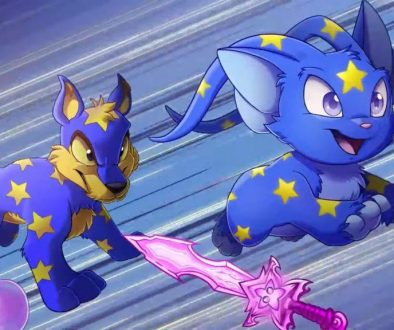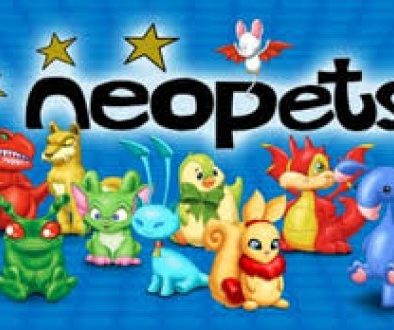Introduction
Nanopets, also known as virtual pets or digital pets, have captured imaginations and hearts across the world since their inception in the late twentieth century. These small handheld companions—part game, part digital friend—offered millions a unique blend of nurturing, entertainment, and technology. From the playgrounds of the 1990s to the smartphones of today, nanopets have not only reflected societal advancements in digital technology but have also shaped the way people think about companionship, responsibility, and even identity in an increasingly virtual world.
Origins: Seeds of a Digital Revolution

The concept of artificial companionship has deep roots, tracing back to the earliest experiments with AI and digital interaction in the 1960s and 70s, such as ELIZA, a computer program simulating conversation. However, the idea of a “digital pet” as understood today found its first concrete form in the mid-1990s in Japan—a nation already at the forefront of blending play and electronics.
It was Bandai Namco, a major Japanese toy maker, who truly ignited the phenomenon with the launch of Tamagotchi in 1996. Conceived by Akihiro Yokoi and Aki Maita, Tamagotchi was designed as a pocket-sized, egg-shaped device featuring a simple LCD screen and three control buttons. Players were tasked with hatching, feeding, cleaning up after, and emotionally attending to a virtual creature, whose fate depended entirely on the user’s diligence.
The First Wave: The Tamagotchi Era
When Tamagotchi—whose name blends the Japanese words for “egg” and “watch”—hit the shelves, it sparked instant global craze. By 1997, over 40 million units had been sold worldwide. Children and adults alike became engrossed in the daily routines of their tiny digital wards. Schools across the globe issued bans as students obsessively checked on their pets during class, unwilling to risk their Tamagotchi’s well-being.
Not to be outdone, Bandai’s competitors responded swiftly. Tiger Electronics, an American company, released its own line of nanopets, including the Giga Pet, which likewise found massive popularity. These digital companions offered variations on the same core mechanics: feeding, cleaning, playing, and sometimes disciplining a pixelated creature on a monochrome screen.
Why Did Nanopets Become So Popular?

Several factors contributed to the explosive rise of nanopets:
- Technological Novelty: The marriage of small, affordable LCD technology and miniature computer chips enabled the creation of an interactive, portable toy unlike anything seen before.
- Nurturing Instinct: Nanopets tapped into the natural human desire to care for and nurture, offering a sense of responsibility and accomplishment, especially for children.
- Social Aspects: Kids compared pets, swapped tips, and even participated in virtual pet competitions, making nanopets a playground currency of sorts.
- Accessibility: With a low price point and few technical barriers, nanopets were accessible to nearly anyone.
The Second Wave: Diversification and Digital Growth
As the initial excitement slowly waned, manufacturers sought to keep the concept fresh. The late 1990s and early 2000s saw the introduction of more sophisticated models and new brands. Tamagotchi evolved with “Tamagotchi Connection,” which allowed infrared communication between devices, enabling pets to visit each other, exchange gifts, and even “marry.”
Other brands, such as Digimon (also from Bandai), added a competitive element, letting users “battle” their monsters and thus blending the nurturing aspects of nanopets with the excitement of player-versus-player gaming. Giga Pets introduced tie-ins with popular franchises—dinosaurs, unicorns, and even Star Wars characters—broadening the appeal across demographics.
Meanwhile, the concept took root on personal computers, with programs like “Petz” and “Catz” letting children adopt, raise, and breed virtual animals in colorful digital environments.
Challenges and Decline
No fad lasts forever. As the 2000s progressed, nanopets faced new challenges:
- Technological Obsolescence: The rise of smartphones and increasingly sophisticated console and PC games made the simple graphics and mechanics of classic nanopets seem outdated.
- Market Over-Saturation: The rush to cash in on the craze led to a glut of low-quality imitators, which diluted the novelty and appeal of the format.
- Changing Tastes: As gaming evolved, players gravitated towards more immersive experiences with 3D graphics, multiplayer connectivity, and deeper gameplay.
Still, for many, the nostalgia and simplicity of nanopets never truly faded. Rather, they became a cherished memory, evoking a more innocent, analog-digital hybrid era.
Digital Rebirth: Nanopets in the Modern Age

The smartphone era, starting in earnest around 2007, brought about a dramatic transformation in the world of digital pets. Apps like “Pou,” “My Talking Tom,” and “Neko Atsume” reimagined nanopets for a new generation, leveraging vibrant graphics, touchscreens, and internet connectivity. The core mechanics—feeding, cleaning, and playing with a virtual creature—remained, but they were now enhanced with social sharing, in-app purchases, and persistent online worlds.
Bandai, recognizing the enduring love for Tamagotchi, launched “Tamagotchi On” in 2019, blending classic gameplay with Bluetooth connectivity and a color screen. Virtual pets also found a home in the world of augmented reality (AR), as seen with Pokémon Go, which, while not a nanopet in the traditional sense, captured the spirit by allowing users to “catch” and interact with creatures in the real world.
The Cultural and Psychological Impact of Nanopets
Nanopets are more than mere toys; they have served as cultural touchstones and even tools for learning. Psychologists have noted that caring for a digital pet can teach children about empathy, responsibility, and the consequences of neglect. For some, nanopets provided companionship during lonely moments, acting as early precursors to more advanced AI companions.
The phenomenon also invited critique and reflection. Concerns emerged about overattachment, digital distraction, and even grief when a beloved digital pet “died.” These debates presaged later discussions about technology’s role in emotional development and socialization.
Nanopets in Popular Culture
Over the years, nanopets have been referenced in television, film, music, and literature. They became icons of 1990s culture, alongside fads like Beanie Babies and Pokémon cards. Nostalgia for the era has led to periodic revivals, with retro-inspired gadgets and limited-edition Tamagotchi releases sparking excitement among collectors and new fans alike.
The Future of Nanopets
Today, the concept of a virtual companion is more relevant than ever. With advances in artificial intelligence, machine learning, and virtual reality, the next generation of nanopets may be smarter, more interactive, and even more emotionally resonant. Already, AI-driven chatbots and robotic pets are entering homes, blurring the line between digital and physical companionship.
Conclusion
From their humble beginnings as simple LCD toys to their transformation into sophisticated digital and even AI-powered companions, nanopets have left a lasting mark on the cultural landscape. They have reflected humanity’s fascination with nurturing, technology, and the ever-evolving definition of what it means to be connected in a digital world. As technology continues to advance, it is likely that nanopets—in one form or another—will remain faithful companions, always ready to delight, comfort, and inspire a new generation.




